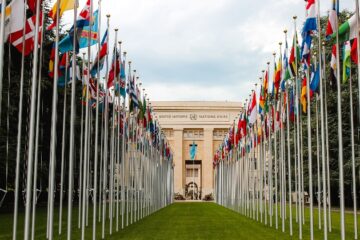In the past, child protection’s main approach considered both the children and their families as just a vulnerable group in need of social and psychological support. Now the notion is much broader, and the thinking is more guided by the intersection of law, sociology, anthropology, and psychology to understand the specifics of cultural context to achieve holistic child protection. UNICEF’s core mandate is to prevent or respond to three of the most egregious harms that children face: child violence, child abuse, and child exploitation. UNICEF defines 17 child protection issues as central to their mandate of improving the lives of children. The issues vary from child labor, birth registration, sexual violence against children to other issues related to children in conflict and emergency contexts. The types of harm and the context of threats can vary and change across the different stages of childhood.
Young children growing up in adverse environments are at risk. However, we have interventions that can prevent the harm and provide children with opportunities to survive and thrive. Violence in early childhood doesn’t just cause unnecessary and enduring pain, but it also creates toxic stress that impedes the child’s positive development. Toxic stress is caused by intense, frequent, and/or prolonged adversity such as physical or emotional abuse, chronic neglect, caregiver substance abuse or mental illness, exposure to violence, and/or the accumulated burdens of family economic hardship with the absence of protective factors from caregivers. Although stress is part of our everyday experience, the excessive amounts of the cortisol hormone in the body, as a result from stress, negatively impact brain development.
The environment and experiences that the children go through play a large role in shaping their development. According to Black et al, Lancet 2017, around 250 million children worldwide do not meet their developmental potential in the first five years of life, this number varies across and within countries depending on the risk factors that children are exposed to. The risk factors include biological risk such as: malnutrition, infectious illnesses, and food insecurity. The risk factors also include psychosocial risks such as: lack of learning opportunities, maternal depression, family distress, and violence. When children are exposed to risk factors more than protective factors, they will have weaker learning outcomes, behavioral outcomes, health outcomes, and developmental outcomes.
Policymakers worldwide should increase the investment in early childhood development to improve child well-being and protect children. This investment should be focused on developing protective factors to outweigh risk factors. This development will lead to more economic opportunities as a result of better education. The first two to three years of life are the most rapid period of brain development. To ensure a proper brain development for young children, they should have adequate nutrition, responsive care, learning opportunities early in life, and a secure and safe environment.
Photo by Ketut Subiyanto from Pexels



